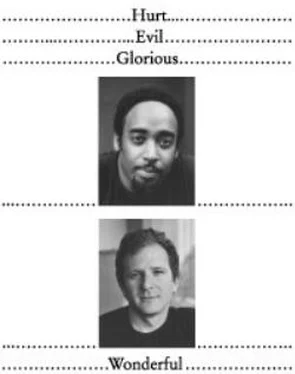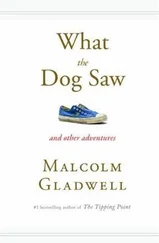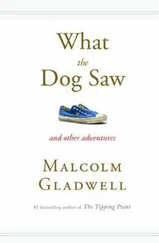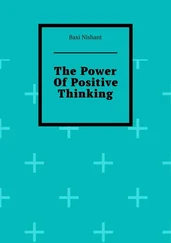Malcolm Gladwell - Blink - The Power of Thinking Without Thinking
Здесь есть возможность читать онлайн «Malcolm Gladwell - Blink - The Power of Thinking Without Thinking» весь текст электронной книги совершенно бесплатно (целиком полную версию без сокращений). В некоторых случаях можно слушать аудио, скачать через торрент в формате fb2 и присутствует краткое содержание. Жанр: Культурология, Психология, на английском языке. Описание произведения, (предисловие) а так же отзывы посетителей доступны на портале библиотеки ЛибКат.
- Название:Blink: The Power of Thinking Without Thinking
- Автор:
- Жанр:
- Год:неизвестен
- ISBN:нет данных
- Рейтинг книги:3 / 5. Голосов: 1
-
Избранное:Добавить в избранное
- Отзывы:
-
Ваша оценка:
- 60
- 1
- 2
- 3
- 4
- 5
Blink: The Power of Thinking Without Thinking: краткое содержание, описание и аннотация
Предлагаем к чтению аннотацию, описание, краткое содержание или предисловие (зависит от того, что написал сам автор книги «Blink: The Power of Thinking Without Thinking»). Если вы не нашли необходимую информацию о книге — напишите в комментариях, мы постараемся отыскать её.
Blink: The Power of Thinking Without Thinking — читать онлайн бесплатно полную книгу (весь текст) целиком
Ниже представлен текст книги, разбитый по страницам. Система сохранения места последней прочитанной страницы, позволяет с удобством читать онлайн бесплатно книгу «Blink: The Power of Thinking Without Thinking», без необходимости каждый раз заново искать на чём Вы остановились. Поставьте закладку, и сможете в любой момент перейти на страницу, на которой закончили чтение.
Интервал:
Закладка:
“It’s Oscar, which means that yes, his unit is now definitely outside of Tobruk.” An operator’s fist is stable.
What Gottman is saying is that a relationship between two people has a fist as well: a distinctive signature that arises naturally and automatically. That is why a marriage can be read and decoded so easily, because some key part of human activity—whether it is something as simple as pounding out a Morse code message or as complex as being married to someone—has an identifiable and stable pattern. Predicting divorce, like tracking Morse Code operators, is pattern recognition.
“People are in one of two states in a relationship,” Gottman went on. “The first is what I call positive sentiment override, where positive emotion overrides irritability. It’s like a buffer. Their spouse will do something bad, and they’ll say, ‘Oh, he’s just in a crummy mood.’ Or they can be in negative sentiment override, so that even a relatively neutral thing that a partner says gets perceived as negative. In the negative sentiment override state, people draw lasting conclusions about each other. If their spouse does something positive, it’s a selfish person doing a positive thing. It’s really hard to change those states, and those states determine whether when one party tries to repair things, the other party sees that as repair or hostile manipulation. For example, I’m talking with my wife, and she says, ‘Will you shut up and let me finish?’ In positive sentiment override, I say, ‘Sorry, go ahead.’ I’m not very happy, but I recognize the repair. In negative sentiment override, I say, ‘To hell with you, I’m not getting a chance to finish either. You’re such a bitch, you remind me of your mother.’”
As he was talking, Gottman drew a graph on a piece of paper that looked a lot like a chart of the ups and downs of the stock market over the course of a typical day. What he does, he explains, is track the ups and downs of a couple’s level of positive and negative emotion, and he’s found that it doesn’t take very long to figure out which way the line on the graph is going. “Some go up, some go down,” he says. “But once they start going down, toward negative emotion, ninety-four percent will continue going down. They start on a bad course and they can’t correct it. I don’t think of this as just a slice in time. It’s an indication of how they view their whole relationship.”
Let’s dig a little deeper into the secret of Gottman’s success rate. Gottman has discovered that marriages have distinctive signatures, and we can find that signature by collecting very detailed emotional information from the interaction of a couple. But there’s something else that is very interesting about Gottman’s system, and that is the way in which he manages to simplify the task of prediction. I hadn’t realized how much of an issue this was until I tried thin-slicing couples myself. I got one of Gottman’s tapes, which had on it ten three-minute clips of different couples talking. Half the couples, I was told, split up at some point in the fifteen years after their discussion was filmed. Half were still together. Could I guess which was which? I was pretty confident I could. But I was wrong. I was terrible at it. I answered five correctly, which is to say that I would have done just as well by flipping a coin.
My difficulty arose from the fact that the clips were utterly overwhelming. The husband would say something guarded. The wife would respond quietly. Some fleeting emotion would flash across her face. He would start to say something and then stop. She would scowl. He would laugh. Someone would mutter something. Someone would frown. I would rewind the tape and look at it again, and I would get still more information. I’d see a little trace of a smile, or I’d pick up on a slight change in tone. It was all too much. In my head, I was frantically trying to determine the ratios of positive emotion to negative emotion. But what counted as positive, and what counted as negative? I knew from Susan and Bill that a lot of what looked positive was actually negative. And I also knew that there were no fewer than twenty separate emotional states on the SPAFF chart. Have you ever tried to keep track of twenty different emotions simultaneously? Now, granted, I’m not a marriage counselor. But that same tape has been given to almost two hundred marital therapists, marital researchers, pastoral counselors, and graduate students in clinical psychology, as well as newlyweds, people who were recently divorced, and people who have been happily married for a long time—in other words, almost two hundred people who know a good deal more about marriage than I do—and none of them was any better than I was. The group as a whole guessed right 53.8 percent of the time, which is just above chance. The fact that there was a pattern didn’t much matter. There were so many other things going on so quickly in those three minutes that we couldn’t find the pattern.
Gottman, however, doesn’t have this problem. He’s gotten so good at thin-slicing marriages that he says he can be in a restaurant and eavesdrop on the couple one table over and get a pretty good sense of whether they need to start thinking about hiring lawyers and dividing up custody of the children. How does he do it? He has figured out that he doesn’t need to pay attention to everything that happens. I was overwhelmed by the task of counting negativity, because everywhere I looked, I saw negative emotions. Gottman is far more selective. He has found that he can find out much of what he needs to know just by focusing on what he calls the Four Horsemen: defensiveness, stonewalling, criticism, and contempt. Even within the Four Horsemen, in fact, there is one emotion that he considers the most important of all: contempt. If Gottman observes one or both partners in a marriage showing contempt toward the other, he considers it the single most important sign that the marriage is in trouble.
“You would think that criticism would be the worst,” Gottman says, “because criticism is a global condemnation of a person’s character. Yet contempt is qualitatively different from criticism. With criticism I might say to my wife, ‘You never listen, you are really selfish and insensitive.’ Well, she’s going to respond defensively to that. That’s not very good for our problem solving and interaction. But if I speak from a superior plane, that’s far more damaging, and contempt is any statement made from a higher level. A lot of the time it’s an insult: ‘You are a bitch. You’re scum.’ It’s trying to put that person on a lower plane than you. It’s hierarchical.”
Gottman has found, in fact, that the presence of contempt in a marriage can even predict such things as how many colds a husband or a wife gets; in other words, having someone you love express contempt toward you is so stressful that it begins to affect the functioning of your immune system. “Contempt is closely related to disgust, and what disgust and contempt are about is completely rejecting and excluding someone from the community. The big gender difference with negative emotions is that women are more critical, and men are more likely to stonewall. We find that women start talking about a problem, the men get irritated and turn away, and the women get more critical, and it becomes a circle. But there isn’t any gender difference when it comes to contempt. Not at all.” Contempt is special. If you can measure contempt, then all of a sudden you don’t need to know every detail of the couple’s relationship.
I think that this is the way that our unconscious works. When we leap to a decision or have a hunch, our unconscious is doing what John Gottman does. It’s sifting through the situation in front of us, throwing out all that is irrelevant while we zero in on what really matters. And the truth is that our unconscious is really good at this, to the point where thin-slicing often delivers a better answer than more deliberate and exhaustive ways of thinking.
Читать дальшеИнтервал:
Закладка:
Похожие книги на «Blink: The Power of Thinking Without Thinking»
Представляем Вашему вниманию похожие книги на «Blink: The Power of Thinking Without Thinking» списком для выбора. Мы отобрали схожую по названию и смыслу литературу в надежде предоставить читателям больше вариантов отыскать новые, интересные, ещё непрочитанные произведения.
Обсуждение, отзывы о книге «Blink: The Power of Thinking Without Thinking» и просто собственные мнения читателей. Оставьте ваши комментарии, напишите, что Вы думаете о произведении, его смысле или главных героях. Укажите что конкретно понравилось, а что нет, и почему Вы так считаете.












